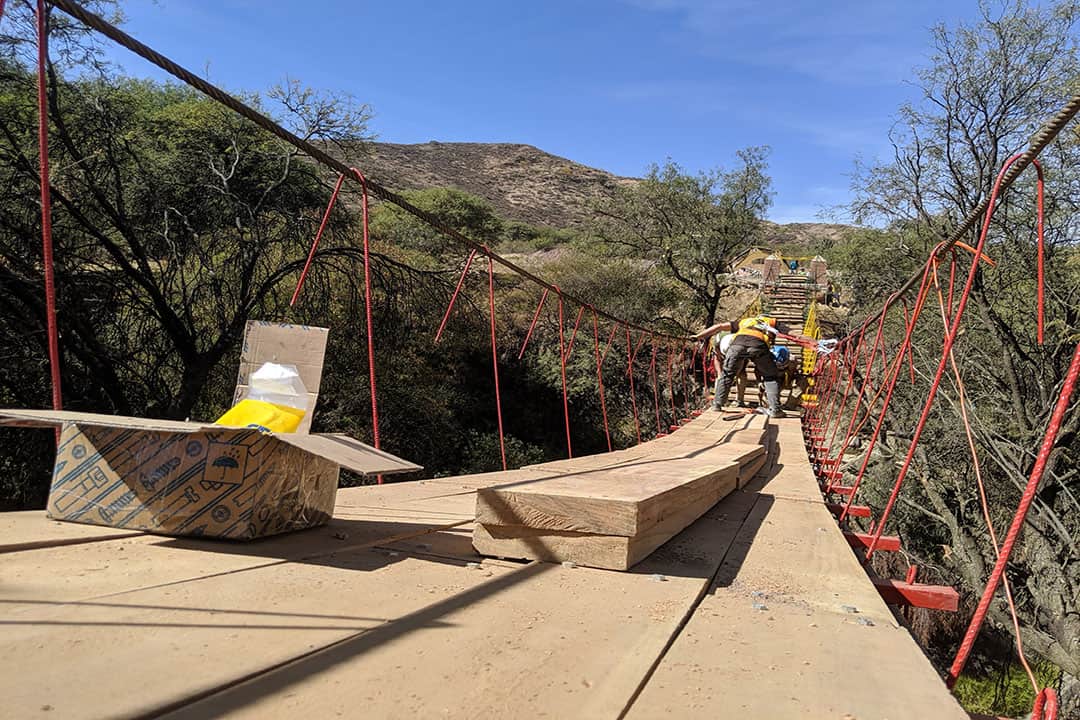A pedestrian footbridge, which was built by the U of T and the Western University chapters of Engineers in Action (EIA), offers a promising future of enhanced transportation during rainy seasons to Bolivians in the Cochabamba district.
The team constructed the Lipez Pedestrian Bridge across the Convento river over May and June. Flooding from November to April usually makes the river uncrossable, posing a dangerous situation for nearby residents that the EIA teams sought to solve.
Improving an entire community’s access to schools, markets, agricultural lands, and hospitals, the Lipez Pedestrian Bridge is as much an engineering feat as it is a cultural phenomenon for locals in Lipez and surrounding areas. The multi-dimensional project will prevent an estimated two to three injuries per year from unsafe crossings.
Stemming from a tradition initiated by the group’s parent organization, Bridges to Prosperity, the project has a clear mission: to empower rural communities while acknowledging that geographic isolation serves as a significant barrier to economic and social development. In short, the group envisions “a world where a lack of adequate infrastructure does not contribute to global poverty.”
A myriad of subdivisions and roles — including but not limited to fundraising, design, project management, construction, media, and safety — all contributed to create a lasting infrastructural staple in the Lipez community that is intended to serve its people for years to come.
The team, consisting largely of engineering students, worked tirelessly against a demanding timeline and persisted in the face of numerous challenges and setbacks. Despite material delivery delays and even a change in site location, the engineers constructed the bridge within six weeks, following a year of technical preparation.
The projects’ impact
The impact of the project was two-fold: not only was the project beneficial for the Bolivians, but it was also an immensely positive learning opportunity for the students. Three engineers with first-hand experience with the project shared their involvements and opinions in an interview with The Varsity.
“It was such a memorable experience being able to see this bridge come to life,” said Cultural Relations Manager Michelle Leon, a second-year civil engineering student, reflecting back on the months of hard work. U of T EIA Co-President Saffa Ramsoomair, a third-year civil engineering student, added that, “Being a part of this team has taught me so much… we’re using our skills as engineers to actually make a difference.”
It’s not difficult to understand how working in a foreign country to improve infrastructure and, ultimately, the quality of life can alter a person’s worldview and bolster their adaptability.
“Physically going to Bolivia and building a bridge really changes your perspective,” said U of T EIA External Relations Manager Luna Amador, a second-year civil engineering student. “You come back and you feel like you are a different person.”
The future of EIA
Moving onward and upward, the team is now embarking on the organization’s most ambitious bridge project. A joint project with three other institutions around the world — University College London, Virginia Polytechnic Institute and State University, and Iowa State University — the bridge will be the largest that the team has ever built, and is expected to be situated in another region of Bolivia.
The team of student engineers and industry professionals will continue to invest their time and skills in rural communities, bridging previously unsurpassable barriers of all shapes and sizes.


